Key Takeaways
1. Multipliers amplify intelligence, while Diminishers drain it
Multipliers get twice the capability from people as do Diminishers.
The Multiplier Effect. Multipliers are leaders who use their intelligence to amplify the smarts and capabilities of the people around them. They create an environment where everyone's intelligence is valued and utilized, leading to increased productivity and innovation. In contrast, Diminishers are leaders who drain intelligence and capability from their teams, often unintentionally, by micromanaging and underutilizing talent.
Key differences:
- Multipliers believe that people are smart and will figure things out
- Diminishers assume they are the smartest person in the room
- Multipliers create space for others to contribute
- Diminishers tend to dominate conversations and decision-making
Impact: Organizations led by Multipliers can potentially double their effective workforce without adding headcount, as they get more from their existing resources.
2. The Talent Magnet attracts and optimizes capability
A players attract other A players. Their smarts and passion make other smart, passionate people want to work here.
Cultivating genius. Talent Magnets are leaders who not only attract top talent but also know how to leverage and develop that talent to its fullest potential. They create a cycle of attraction where smart people want to work for them because they know they'll grow and be challenged.
Key practices:
- Look for talent everywhere, beyond organizational boundaries
- Identify and label people's "native genius"
- Connect people with opportunities that utilize their strengths
- Remove blockers that impede growth and performance
By contrast, Empire Builders (the Diminisher counterpart) hoard resources and underutilize talent, creating a cycle of decline where top performers become disengaged and leave.
3. The Liberator creates space for best thinking and work
You want your people to fail early, fast, and cheap—and then learn from it.
Balancing freedom and accountability. Liberators create an intense but not tense environment where people feel both the safety to contribute their best ideas and the pressure to perform at their highest level. They understand that people's best thinking must be given, not taken.
Practices of a Liberator:
- Create space by restraining themselves and listening more
- Demand people's best work by setting high standards
- Generate rapid learning cycles by encouraging experimentation
Liberators contrast with Tyrants, who create a tense environment that suppresses people's thinking and capability through domination and fear.
4. The Challenger extends and grows people's capabilities
The best thing about being a preferred employer is that it gets you good people, and this launches a virtuous cycle.
Stretching potential. Challengers are leaders who define opportunities that stretch people beyond their current capabilities. They believe that people grow through challenge and that intelligence expands through being tested.
Three-step process:
- Seed the opportunity by showing the need or reframing problems
- Lay down a challenge that is both concrete and stretching
- Generate belief in what's possible through small wins and co-creation
Challengers differ from Know-It-Alls, who give directives that showcase their own knowledge but limit what the organization can achieve to what they personally know how to do.
5. The Debate Maker drives sound decisions through rigorous debate
It is better to debate a decision without settling it than settling a decision without debating it.
Harnessing collective intelligence. Debate Makers understand that with enough minds, they can figure out complex problems. They create a decision-making process that not only leads to better decisions but also prepares the organization to execute those decisions effectively.
Key practices:
- Frame the issue clearly before debate begins
- Create safety for best thinking while demanding rigor
- Drive sound decisions by reclarifying the process and communicating rationale
This approach contrasts with Decision Makers, who often make decisions within a small inner circle, leaving the broader organization in the dark and unprepared to execute.
6. The Investor gives ownership and accountability for results
The reward for winning a pinball game is to get a chance to play the next one.
Building capability and independence. Investors are leaders who give other people the ownership for results and invest in their success. They understand that their role is to invest, teach, and coach, while keeping the accountability for results with their team members.
Three-step process:
- Define ownership clearly
- Invest resources, including teaching and coaching
- Hold people accountable for results
Investors differ from Micromanagers, who maintain ownership and create dependency, limiting the growth and capability of their teams.
7. Becoming a Multiplier is a choice and a journey
Give yourself permission to be better than your boss.
Transformational leadership. Becoming a Multiplier is a deliberate choice that requires self-awareness, intention, and practice. It's not about perfection, but about consistently moving along the continuum from Diminisher to Multiplier behaviors.
Strategies for becoming a Multiplier:
- Work the extremes: Focus on neutralizing your biggest weakness and amplifying your greatest strength
- Start with the assumptions: Adopt the mindset that people are smart and will figure things out
- Take the 30-Day Multiplier Challenge: Focus on one practice for 30 days to build new habits
The journey to becoming a Multiplier is not just about personal growth, but about creating a ripple effect that can transform organizations and even societies by fully utilizing the intelligence and capabilities of everyone.
Last updated:
FAQ
What's Multipliers: How the Best Leaders Make Everyone Smarter about?
- Leadership Styles: The book contrasts two leadership styles: Multipliers, who enhance team intelligence, and Diminishers, who suppress it.
- Multiplier Effect: It introduces the "Multiplier Effect," where Multipliers can double team productivity compared to Diminishers.
- Practical Framework: Offers a framework with five disciplines to help leaders become Multipliers, making it a practical guide for leadership development.
Why should I read Multipliers by Liz Wiseman?
- Enhance Leadership Skills: It provides insights into developing leadership skills that foster a more capable workforce.
- Real-World Examples: The book includes case studies from various industries, showing successful implementation of Multiplier principles.
- Timely Relevance: In resource-constrained environments, the book's insights are crucial for maximizing team potential.
What are the key takeaways of Multipliers?
- Leadership Types: Distinguishes between Multipliers, who create genius, and Diminishers, who drain team potential.
- Five Disciplines: Outlines five practices: Talent Magnet, Liberator, Challenger, Debate Maker, and Investor, each fostering growth.
- Organizational Impact: Multipliers can achieve a 2X effect in productivity, extracting nearly twice the capability from their teams.
What are the best quotes from Multipliers and what do they mean?
- “People actually get smarter around Multipliers.”: Highlights the transformative effect of Multipliers on team intelligence.
- “The most important contribution management needs to make in the 21st century is to increase the productivity of knowledge work.”: Emphasizes the modern leader's role in leveraging team intelligence.
- “It isn’t how much you know that matters. What matters is how much access you have to what other people know.”: Stresses the importance of collaboration and collective intelligence.
What are the five disciplines of Multipliers in Multipliers?
- Talent Magnet: Attracts and optimizes talent, deploying individuals at their highest point of contribution.
- Liberator: Creates an environment that demands the best thinking and work, balancing comfort with pressure.
- Challenger: Lays down challenges that stretch teams beyond their current capabilities.
- Debate Maker: Facilitates rigorous debate, ensuring all voices are heard and the best ideas emerge.
- Investor: Instills ownership and accountability, providing resources for success while holding teams accountable.
How do Multipliers create a cycle of attraction according to Multipliers?
- Attracting Talent: Build a reputation as a place where talent can grow, attracting skilled individuals.
- Utilizing Talent Fully: Deploy new hires in roles that maximize their strengths, enhancing capabilities.
- Recognition and Growth: Celebrate achievements, fostering an environment where individuals feel valued and motivated.
What is the difference between a Talent Magnet and an Empire Builder in Multipliers?
- Talent Magnet: Attracts and optimizes talent, fostering a culture of growth and development.
- Empire Builder: Hoards resources and underutilizes talent, focusing on self-promotion.
- Impact on Culture: Talent Magnets create a positive cycle of growth, while Empire Builders lead to decline and disengagement.
How do Multipliers generate belief in their teams as described in Multipliers?
- Seeding Opportunities: Present challenges that encourage team members to stretch their capabilities.
- Creating Early Wins: Orchestrate small successes to build confidence and momentum.
- Encouraging Ownership: Empower teams to take ownership, fostering a sense of agency and belief in success.
How can I become a Multiplier according to Multipliers?
- Self-Reflection: Assess your leadership style and identify areas where you may diminish team intelligence.
- Practice the Disciplines: Implement the five disciplines in daily interactions, focusing on talent attraction and team challenges.
- Seek Feedback: Regularly solicit feedback from your team and be open to adjustments for a more empowering environment.
What is the 30-Day Multiplier Challenge mentioned in Multipliers?
- Structured Experimentation: Focus on one discipline for thirty days to form new habits and integrate Multiplier behaviors.
- Reflection and Adjustment: Keep a journal to reflect on experiences, adjusting strategies as needed.
- Community Support: Engage with peers for accountability and encouragement, enhancing the learning process.
How do Multipliers leverage the intelligence of their teams according to Multipliers?
- Creating a Safe Environment: Foster a space where team members feel comfortable sharing ideas and taking risks.
- Asking Provocative Questions: Stimulate critical thinking and push team members to explore new possibilities.
- Encouraging Ownership: Empower team members to take initiative and responsibility, enhancing individual and organizational success.
How can I identify if I am an Accidental Diminisher as outlined in Multipliers?
- Self-Reflection: Consider if you dominate discussions, micromanage tasks, or fail to recognize contributions.
- Feedback from Others: Seek honest feedback from your team about your leadership approach.
- Assessment Tools: Use tools like the Accidental Diminisher Quiz to identify behaviors limiting your leadership effectiveness.
Review Summary
Multipliers received mixed reviews, with an average rating of 3.99 out of 5. Many readers found the book's concepts on leadership valuable, praising its insights on bringing out the best in others and creating a positive work environment. However, a common criticism was the book's repetitiveness and length, with some feeling it could have been condensed. Readers appreciated the practical examples and actionable advice, but some found the content overly simplistic. Overall, the book was seen as thought-provoking for leaders looking to improve their management style and team performance.
Similar Books



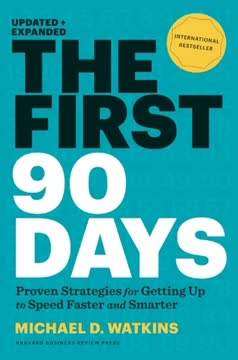
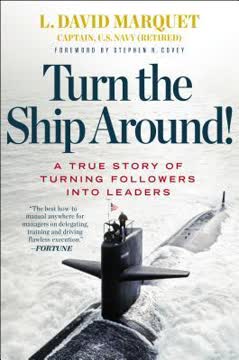
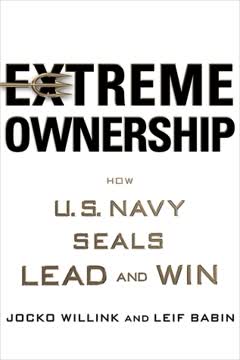
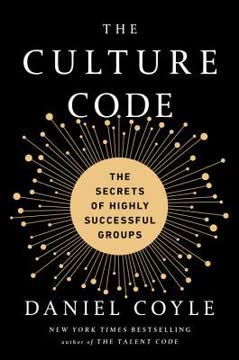
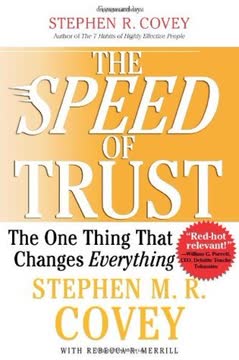


Download PDF
Download EPUB
.epub digital book format is ideal for reading ebooks on phones, tablets, and e-readers.






